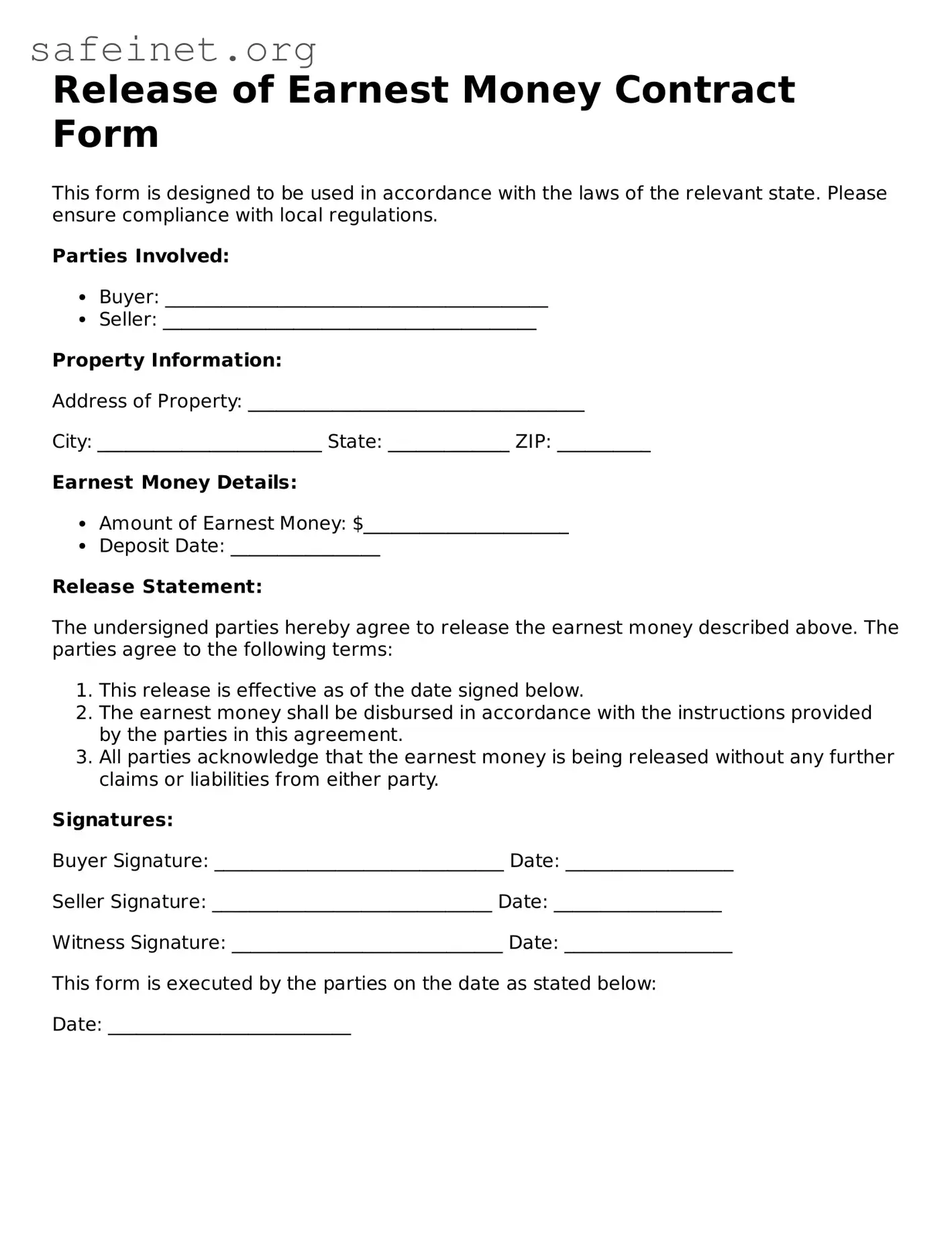Release of Earnest Money Contract Form
This form is designed to be used in accordance with the laws of the relevant state. Please ensure compliance with local regulations.
Parties Involved:
- Buyer: _________________________________________
- Seller: ________________________________________
Property Information:
Address of Property: ____________________________________
City: ________________________ State: _____________ ZIP: __________
Earnest Money Details:
- Amount of Earnest Money: $______________________
- Deposit Date: ________________
Release Statement:
The undersigned parties hereby agree to release the earnest money described above. The parties agree to the following terms:
- This release is effective as of the date signed below.
- The earnest money shall be disbursed in accordance with the instructions provided by the parties in this agreement.
- All parties acknowledge that the earnest money is being released without any further claims or liabilities from either party.
Signatures:
Buyer Signature: _______________________________ Date: __________________
Seller Signature: ______________________________ Date: __________________
Witness Signature: _____________________________ Date: __________________
This form is executed by the parties on the date as stated below:
Date: __________________________
